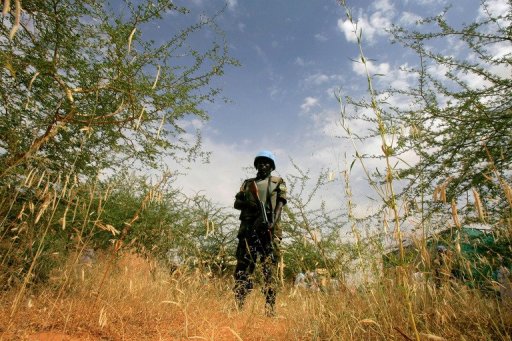SEOUL: Once again, the Korean peninsula is experiencing one of its periodic bouts of extremism, this time marked by the suicide on May 22 of former president, Roh Moo-hyun, and North Korea’s second test of a nuclear device. Roh’s suicide is a disaster for his family and a national shame, while North Korean leader Kim Jong-il’s nuclear blast is something of a temper tantrum, but one which may have dire consequences for the two Koreas and the world.
The North Korean bomb, estimated at four kilotons, does not come anywhere near the magnitude of the atomic bombs of 15-21 kilotons that America dropped on Japan 64 years ago. Indeed, this vainglorious attempt by Kim Jong-il reminds Koreans of the mother bullfrog in Aesop’s Fables who puffed herself out to imitate an ox.
Yet North Korea’s world-defying belligerency is not utter madness. Rather, it is a by-product of its own acute fears of regime collapse.
As a Korean, I am always puzzled by Korean extremism. Where in the world can you find a more isolated, regimented and militarized dynastic mutation of a communist totalitarian system than in North Korea? Where on earth can you see a nuclear-armed, missile-shooting panhandler such as Kim Jong-il? Is there another country where only a father and his son have ruled like demigods for the last 61 years?
Likewise, where else but in South Korea can you find a Christian church whose registered membership runs upwards of 800,000, and where nearly 100,000 adherents attend each of the three Sunday services every week? Where else can you witness an ex-president commit suicide by jumping off a cliff near his residence? And this in a country that had an estimated per capita income of $40 in the 1940’s but has now become the world’s 12th or 13th largest economy.
Cornelius Osgood, an American anthropologist, attributed Korean extremism to the peninsula’s weather. He observed that the Korean temperament is a product of long, harsh Siberian winters and hot, humid summers, with only short springs and autumns.
I believe, however, that Korean extremism stems from the country’s geography and history. Surrounded by hostile neighbors, such as Chinese, Mongols, and Manchus in the north and Japanese across the sea, Koreans have struggle tooth and nail for thousands of years to retain their ethnic, linguistic, cultural, and political identity.
Setting the blame game aside, what can be done with North Korea? Unfortunately, putting the nuclear genie back in the bottle is next to impossible. The effectiveness of available options is limited, and all of them are pregnant with unpredictable political and military consequences.
“Economic strangulation of North Korea appears to be the fallback option. Strengthening and tightening United Nations Security Council Resolution 1718, crafted in the wake of North Korea’s first nuclear test in October 2006, should be the immediate task. The Security Council is already at work drafting a new resolution. But, to make the new resolution effective, China’s full and unwavering participation – which has not yet been the case – is critical. Any unilateral measures against North Korea by individual countries must be executed within the broader framework of the new resolution.
And, even if new sanctions are imposed, the door to the Six-Party Talks must be left open for Kim Jong-il. In this eyeball-to-eyeball situation, the other five parties in the talks – China, Japan, Russia, the United States, and South Korea – must not give in first to North Korea. At present, public opinion worldwide, particularly in South Korea and Japan, is highly volatile. A cooling-off period is necessary. Seeking dialogue with North Korea immediately after its missile tantrum and nuclear brinkmanship is unwise and impractical.
After tough and effective UN-led sanctions are imposed, the concerned parties must wait until North Korea feels the pain of the economic squeeze. But, as North Korea is one of the world’s poorest and least globalized states, the effectiveness of sanctions will be limited.
At the same time, the nuclear threat is not the most immediate danger. The bigger threat today is actual combat, for, the day after North Korea’s nuclear test, South Korea announced its full participation in the US-led Proliferation Strategic Initiative, which seeks to intercept ships that may be involved in illegally transporting nuclear technology. North Korea blasted this South Korean decision as a “declaration of war. So great care and cool heads will be needed in the seas around Korea in the days and weeks to come.
Rising tension on the Korean Peninsula is shattering fast the glimmers of hope for re-unity that followed ten years of progress under the Kim Dae-Jung and Roh Moo-hyun governments. South Korean President Lee Myung-bak, through his flip-flops, and Kim Jong Il, with his renewed nuclear blackmail, both seem determined to see relations deteriorate.
The two current leaders in Korea must not repeat the mistake of their predecessors in the latter part of the nineteenth century. Blinded by internecine domestic power struggles, they failed to see the great powers’ strategic gambits in the region. That failure led directly to the colonization of Korea by Japan.
Worsening inter-Korean relations will certainly make both sides less secure and stable politically, economically, and militarily. Caught in this vicious spiral, North and South Korea will become far more vulnerable to neighboring powers’ strategic maneuvers. As a result, growing inter-Korean hostility may ultimately prove far more lethal to the well-being of all Koreans than Roh Moo-hyun’s tragic suicide and Kim Jong-il’s futile fireworks. Sung Chul Yang,former Ambassador of the Republic of Korea to the US and currently a distinguished professor at Korea University in Seoul, is the author of The North and South Korean Political Systems: A Comparative Analysis. This commentary is published by DAILY NEWS EGYPT Project Syndicate (www.project-syndicate.org).


